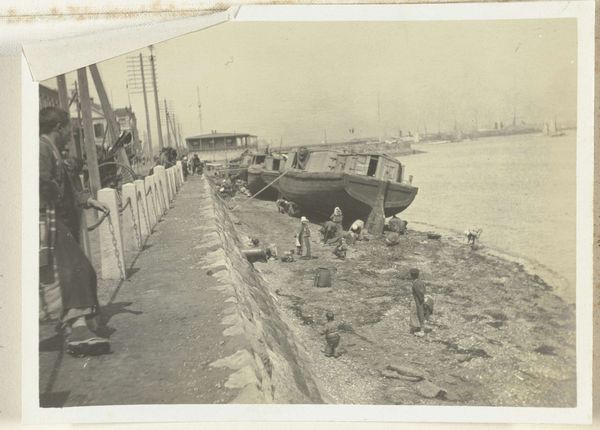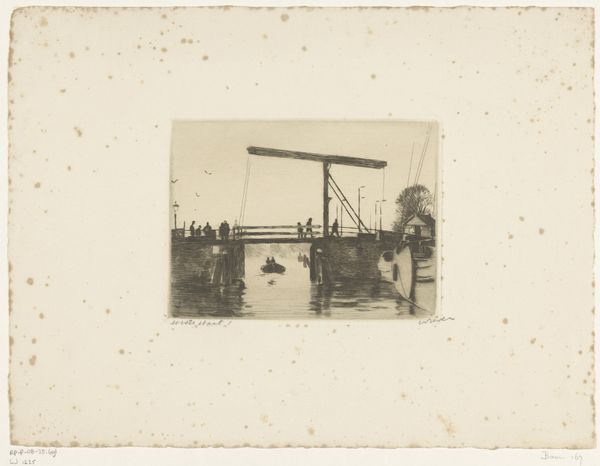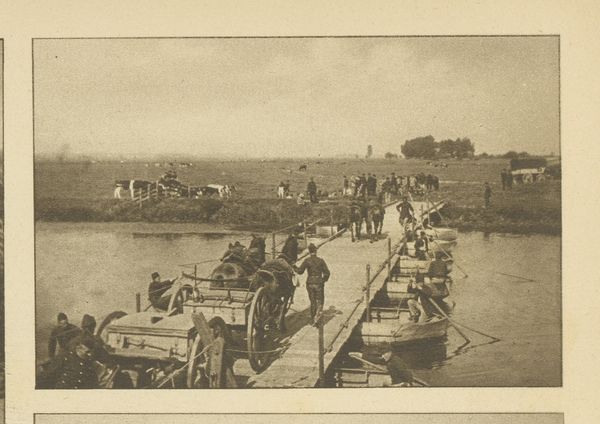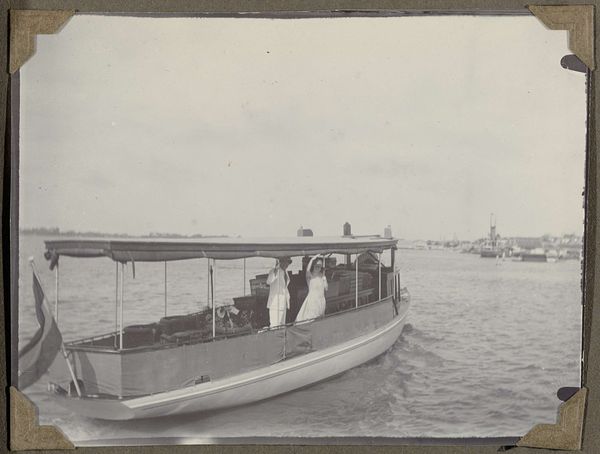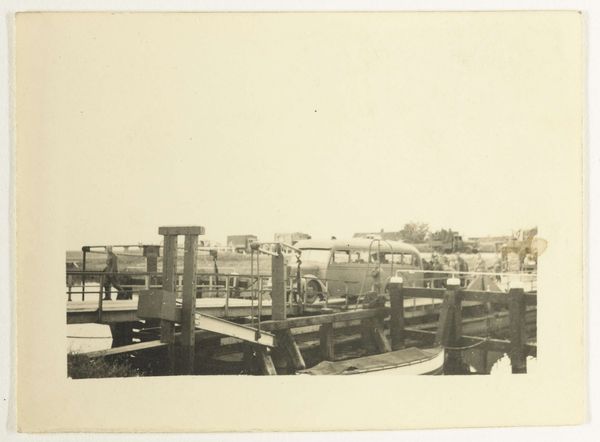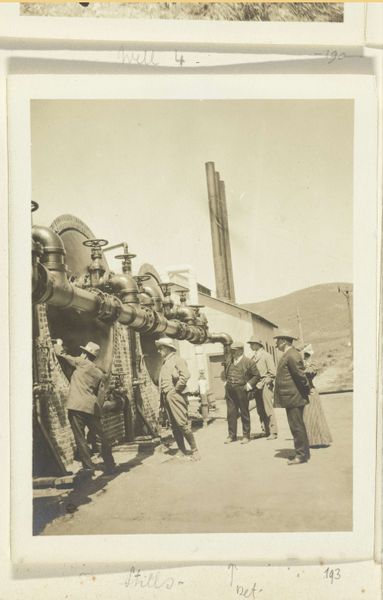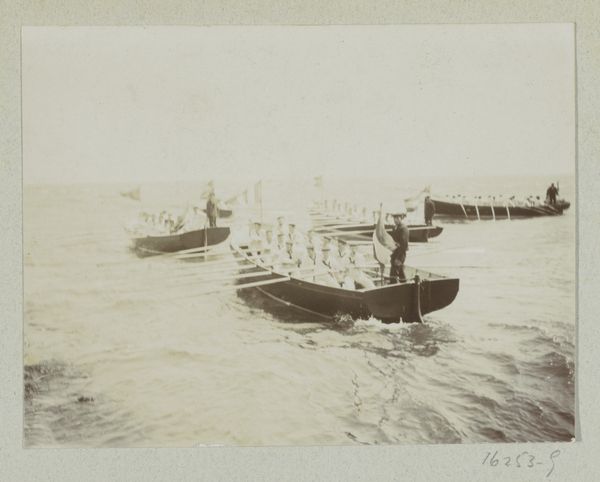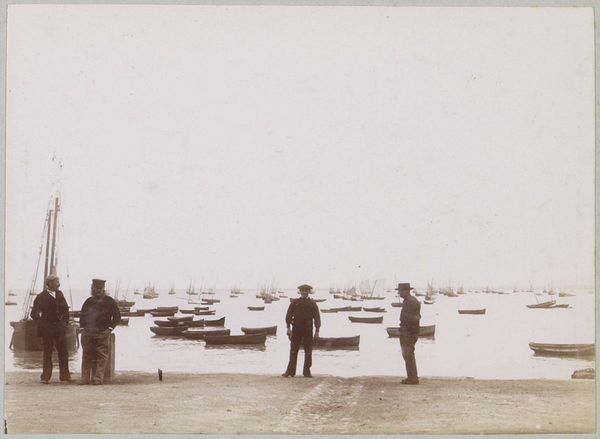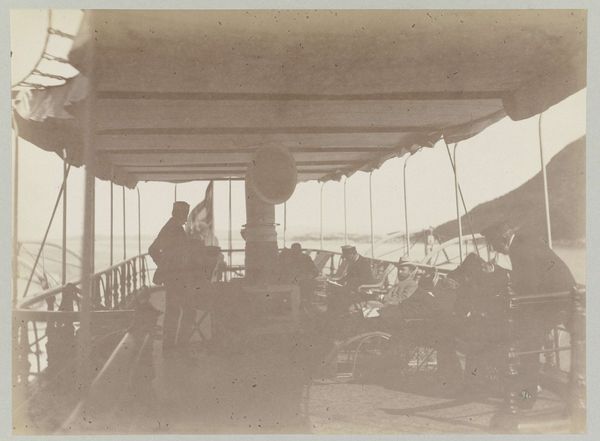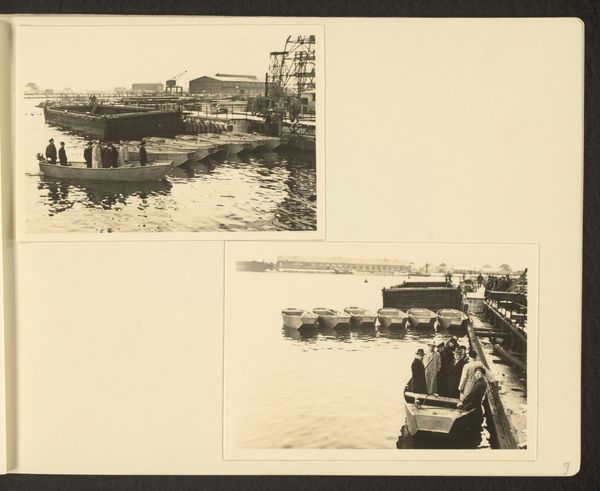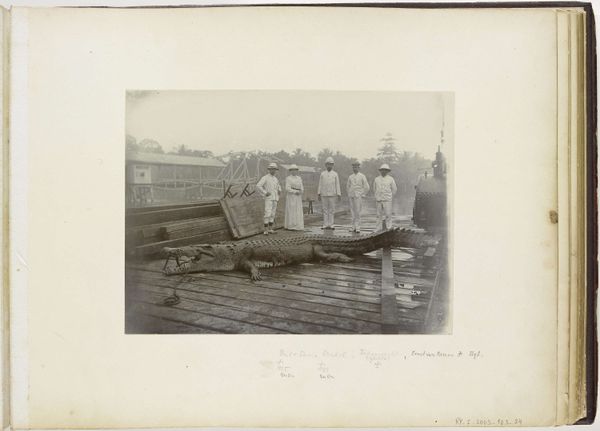
Loopplank van de Norra Finland met daarachter kinderen spelend op muziekinstrumenten. 1898
0:00
0:00
photography, gelatin-silver-print
#
pictorialism
#
landscape
#
photography
#
gelatin-silver-print
#
cityscape
#
history-painting
#
realism
Dimensions: height 100 mm, width 100 mm, height 259 mm, width 365 mm
Copyright: Rijks Museum: Open Domain
Curator: This is "Loopplank van de Norra Finland met daarachter kinderen spelend op muziekinstrumenten.", a gelatin-silver print from 1898, created by Henry Pauw van Wieldrecht, currently held in the Rijksmuseum. Editor: The stark tonal range immediately strikes me. It creates a slightly melancholic mood. What's compelling is the asymmetrical arrangement—how our eye travels from the foreground planks to the blurred, smaller figures in the back. Curator: I think the use of Pictorialism is prominent here; the focus on atmospheric effects and the soft focus indeed evoke a strong mood. Consider how the horizon line interacts with the solid form of the boat – it creates a planar, almost graphic quality. Editor: The boarding plank disrupts any sense of continuous perspective, yes. What historical narrative might van Wieldrecht be trying to convey? The blending of the industrialized and pastoral raises several interesting tensions in the socio-economic context of the 19th Century Netherlands. Curator: Perhaps a tension between industrial progress and nostalgic preservation? It certainly raises the questions of authenticity within both genres – the ‘realism’ feels almost contrived given its highly mediated, photographic status. Note the placement of the musical instruments, symbols maybe? Editor: Exactly! It may not be documentary in intent. The staged arrangement makes it less about pure representation. Given that Henry Pauw van Wieldrecht was a banker with ties to the royal family, how does this status maybe reflect or inform this snapshot of society? Is it a critique, a celebration, or neither? Curator: Good question! Perhaps we're reading it through an entirely contemporary lens. To someone of his time, perhaps these compositional elements were simply aesthetic, without intended meaning, existing only within their relationship to one another in the photographic plane. Editor: Maybe! Looking closer at those details does add ambiguity. In any event, Pauw van Wieldrecht leaves us much to consider in terms of the aesthetic choices within this frozen slice of Dutch life.
Comments
No comments
Be the first to comment and join the conversation on the ultimate creative platform.

